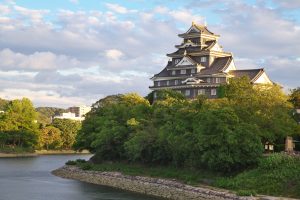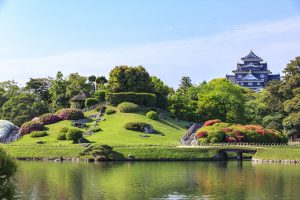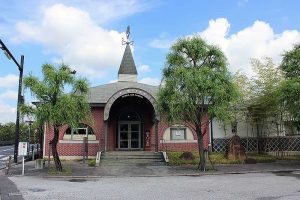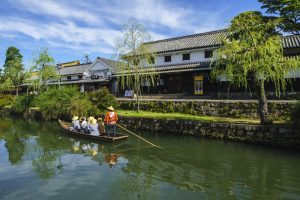Due to various reasons, service will be suspended until Saturday, November 30, 2024.
Prior reservations are required.
Fees
| Section | Adult | Child |
|---|---|---|
| Okayama→Okayama | 4,000 JPY | 2,000 JPY |
|
Okayama→Kurashiki (If leaving the tour at Bikan Quarter or JR Kurashiki Sta.) |
3,460 JPY | 1,720 JPY |
※Fees do not include lunch.
※Child fees apply to children ages 6 to 11.
Schedule
With Japanese Guide
|
12:20 |
Okayama Station West Exit Platform No.27 |
|
12:30- |
・Okayama Castle ・Korakuen Garden ・Yumeji Art Museum |
|
15:00-16:10 |
Kurashiki Bikan Historical Quarter |
|
16:13 |
Kurashiki Station ※Only drop off |
|
17:10 |
Okayama Station West Exit |
*Itinerary, visit order and final arrival time may change depending on traffic conditions.
Please allow for sufficient time for connections if you are planning to depart by train after the tour.
Payment
Please purchase a ticket at JR Okayama Station West Gate Bus Center (ticket window No.5) by 15 minutes before departure.
◆Credit Card
![]()
![]()
![]()
![]()
![]()
◆E-money
![]()
About tour
※ Admission fees included
※Okayama Castle
 |
This castle was erected in 1597 by 16th-century military man Ukita Hideie. Its imposing six-floor main tower is said to have been modeled on the main tower of Azuchi Castle built by Oda Nobunaga, the most prominent military leader of the same period, and is of interest because of its unusual asymmetrical pentagon shape. Clad in black wood planks, this castle is also called “Crow Castle.” |
※Okayama Korakuen Garden
 |
Korakuen is one of Japan’s top three landscape gardens. Construction was begun in 1687 by loyal retainer Tsuda Nagatada on the orders of local feudal lord Ikeda Tsunamasa and completed in 1700. Lord Ikeda initially used the garden for personal recreation and for entertaining important visitors, and it was occasionally opened for visits by people of the domain. Korakuen has been open to the general public since 1884. In 1952, it was designated a “Place of Outstanding Scenic Beauty” under the Cultural Artifacts Protection Law, under which the garden’s historic cultural legacy is preserved and maintained. Korakuen was awarded three Guide Michelin stars in 2007, contributing to its expanding popularity. |
※Yumeji Art Museum(Closed Mondays)
 |
This museum displays the works of Yumeji Takehisa, Taisho era (1912–1926) poet and artist who was born in Okayama. The museum, built on the banks of the Asahi River which flows through Okayama, opened in March 1984 to commemorate the centenary of Yumeji’s birth. It is located in Okayama’s cultural zone centering on Korakuen. The museum’s red brick building topped with a weathervane is reminiscent of the days when Yumeji lived. One of the city’s newer attractions, it welcomes numerous visitors. It was awarded one Guide Michelin star in 2007. |
Kurashiki Bikan Historical Quarter(Free time)
 |
In the early days of the Edo period (1603–1867), Kurashiki was designated an area under direct control of the shogunal government. Over the years, it flourished as a goods distribution center for southern Bitchu (the western part of present-day Okayama prefecture). Estates behind white or patterned walls and storehouses filled a district that ran from the banks of the Kurashiki River to south side of Mount Tsurugata and formed a well-preserved Edo period townscape. In 1979, the Bikan Historical Quarter was chosen as the second district within the prefecture to be designated an Preservation Area for Important Traditional Architecture. The best-known buildings in the district are the Ohara Museum of Art, erected in 1930 as Japan’s first museum for Western art, and Kurashiki Ivy Square, the building housing the former Kurashiki Spinning Mill, refurbished and repurposed as a tourist facility. Visitors are free to stroll as they wish through the Kurashiki Bikan Historical Quarter (admission fees at own expense). |


